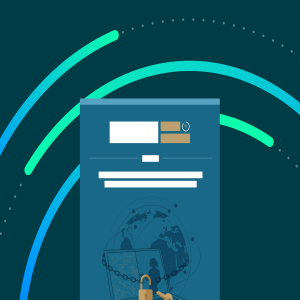In June, Tyton Partners released Time for Class 2024: Unlocking Access to Effective Digital Teaching and Learning*. As a partner in the survey, Turnitin learned from the insights of the study’s more-than-3,000 higher education administrators, instructors, and student respondents. If you haven’t already had a chance, I highly recommend looking at what they found regarding the use of generative AI (GenAI) and access to digital learning because there is still much to glean from this ever-evolving technology.
Admittedly, I too am still listening, learning, and reading more than making predictions. If anyone tells you they know what the future of generative AI will be in the classroom - be skeptical. I certainly am. There are quite a few more unknowns than knowns. As my dad often says, “them ain’t good betting odds.”
We can safely say that GenAI will open up new opportunities and challenges, and it is here to stay. Below are my five top takeaways from Tyton’s latest Time for Class study and why they are important to me as Turnitin’s chief product officer.
Takeaway 1: A third of U.S. higher education instructors have never used a generative AI tool
36 percent of instructors surveyed said they had yet to experiment with a GenAI tool, such as ChatGPT. As I mentioned before, generative AI is going nowhere, and our best path forward is to understand how, when, and where students benefit from incorporating these tools into assignments and where these tools detract from the learning process. Stated simply, educators need a basic understanding of its power and limitations.
I understand that sometimes the first step is the hardest, but I strongly recommend educators start by typing an essay prompt or assessment into ChatGPT, and see what happens. You won’t understand these tools unless you try using them.
Educators will find that through experimentation, GenAI can assist in developing lessons and content. My husband is a high school English teacher. He recently prompted ChatGPT to provide examples of appositives to help him quickly build his lesson plan.
Educators can also use it to understand the technology’s writing style better. This will help them discern AI writing from student writing in future submissions because just like each person has their own unique writing style, so does GenAI.
Takeaway 2: Institutional policies are still in the early stages of implementation
According to the study, institutional policies are still in the early stages of implementation with 76 percent of administrators indicating their institutions have not fully developed or implemented institution-wide policies regarding the use of AI tools.
Last year, I very much supported institutional policies pertaining to the student use of AI. Now, I generally believe institutional-level academic integrity policies should be broad, universal, and high-level; focused on how students represent their work, and how they cite their sources and references.
As for assignment-level policies, I believe the opposite. I believe it is up to the instructor to clearly state if, when, and how AI writing can be used in an assignment. There are times when it is appropriate and there are times when it is not. I think AI-specific policies belong at the assignment-level because they should be based on the assignment’s unique learning objectives. For example, there is a huge difference between using GenAI in a Master of Business Administration class, where students are writing proficiently and have strong critical thinking skills, versus a first-year undergraduate course, where the students are still developing foundational writing and critical thinking skills.
Takeaway 3: Students and instructors differ on what constitutes acceptable generative AI uses
According to Tyton’s latest findings, student respondents said they are more likely to write large parts of their assignments using GenAI tools than what instructors deem permissible. For example, according to unpublished data in the same 2024 study, 37 percent of second-year humanities students responded that they think it is acceptable to use generative AI to write large parts of assignments, while only 15 percent of those second-year humanities instructors responded they found it acceptable.
This gap is a problem and is why I continue to advocate for two things - educators’ awareness of how often students use AI writing technology and formal assignment-level AI writing usage policies that clearly identify what is and is not permissible. In my opinion, these two things are key to helping students gain AI literacy skills that are critical to their future workplace success, developing their writing skills, and harnessing original thought.
Furthermore, at this year’s AIR Show at ASU+GSV, many students in attendance asked my Turnitin colleagues and I, “how much AI usage in a writing submission is too much?” I don’t know the answer and I’m not the only one. It's more complicated than giving a simple percentage, such as 40 percent or more AI writing in a paper is too much.
Educational leaders, researchers, and practitioners need to determine the impact, and appropriate ways for instructors and students to integrate AI depending on the grade or course level, the assignment type, and by discipline. While I’m not a learning scientist, I imagine this is a multi-year research project that measures impact with empirical data. These studies need to be happening, and so far, I haven’t seen them.
Takeaway 4: Both students and instructors report increased workloads, attributed to the need for enhanced content development and integrity safeguards
Like any new technology, the promise of generative AI is to enable people to do more with less. But, just like any new tool, it takes time to gain efficiency. We need time to acclimate to the technology, understand its shape, and determine appropriate usage. While 34 percent of the instructors surveyed by Tyton said their overall workload increased, I am optimistic these workload increases will not last forever.
As the chief product officer at Turnitin, I am here to help educators absorb changes that stem from the advent of new and disruptive technologies, and create products that respond to their needs and challenges.
Recognizing that educators and students are adding more things to their to-do lists because of AI writing, Turnitin is excited to share that, this fall, we will launch a new student writing solution. The new product will give both educators and students confidence in the authenticity of work through the “proof of process.” It will be integrated into existing Turnitin workflows, summarizing granular data for instructors like copied and pasted text, typing patterns, total construction time, and draft history. Coupled with our existing similarity checks and AI indicators, our goal for this solution is to give educators confidence and insight without burden, and offer students comfort in knowing their hard work won’t be judged solely by a score.
To learn more about this new product and see some in-product images, check out our one year anniversary blog post.
Takeaway 5: Half of students surveyed shared they will likely keep using generative AI tools even if banned; a 21 percent increase from spring 2023
We have come a long way since institutions outright banned ChatGPT from school networks and devices in early 2023. I don’t think banning is still on the table for many institutions but the results from this question are clear. Students feel generative AI can help them complete work and perform assignments.
The path forward is for educators to provide clear guidance on using GenAI for their assignments, and for students to provide transparency about if and how they use generative AI. Through open dialogue and experimentation, educators can determine the impact of use on student development and skill acquisition.
Closing thoughts on the Tyton Study
As I mentioned earlier, we are still in the early days of generative AI, and we all should continue to listen, observe, and ask questions as society continues to understand the technology’s impact on the classroom and lecture hall.
I, for one, am looking forward to hearing more from administrators, educators, and students about their concerns, questions, and feedback so that Turnitin can continue to provide solutions that meet their rapidly changing needs.
*Turnitin was a partner in providing compensation to conduct Tyton’s Time for Class 2024: Unlocking Access to Effective Digital Teaching & Learning.





